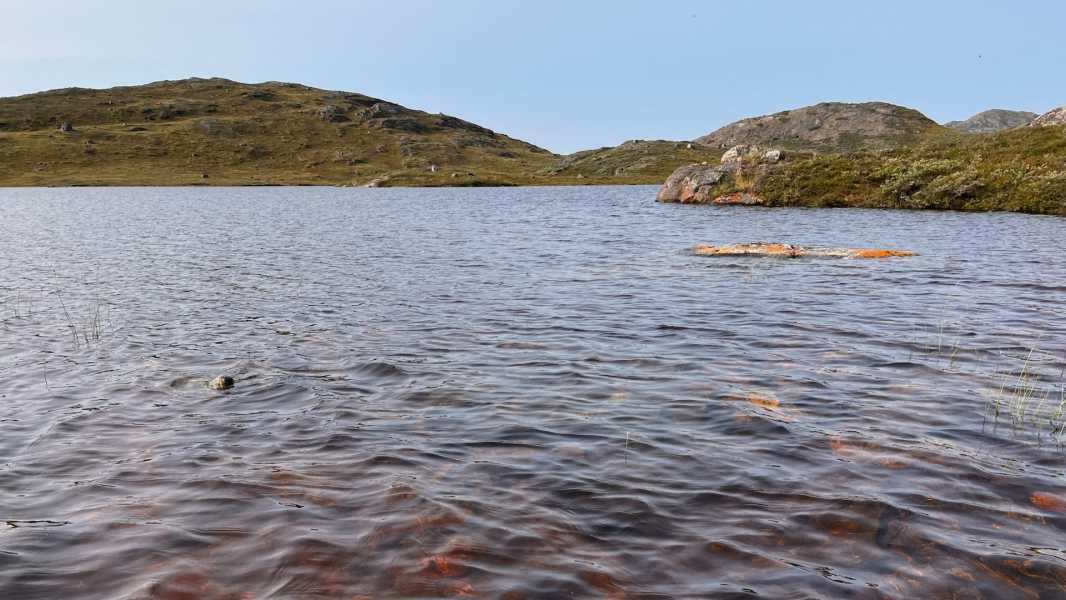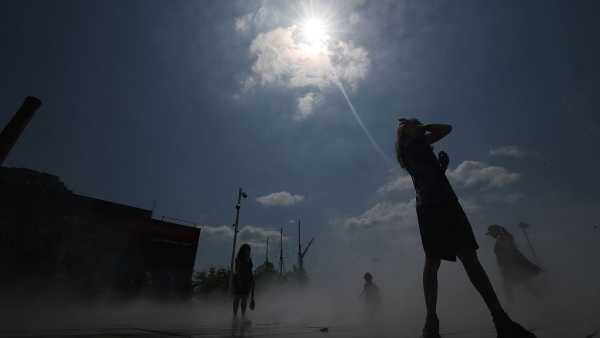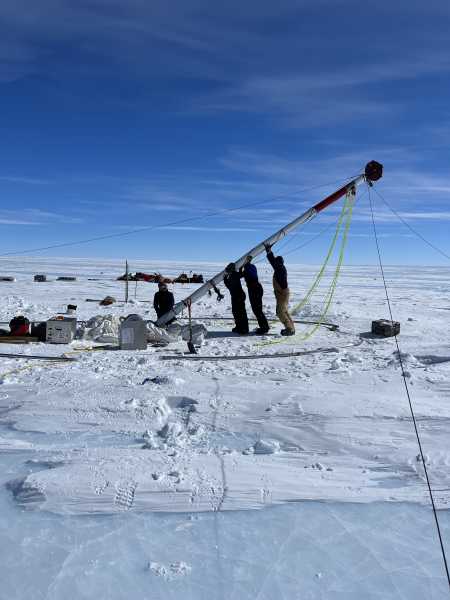
A lake in Greenland near Kangerlussuaq turned dark after intense heat and rain in 2022. (Photo courtesy of Vaclava Hazukova)
Thousands of Greenland's crystal clear blue lakes have turned murky brown due to global warming, and the worst news is that they've started emitting carbon dioxide.
Record temperatures and rainfall in 2022 caused West Greenland's lakes to reach a tipping point: Instead of absorbing carbon dioxide (CO₂), they began releasing it into the atmosphere, according to a new study.
The changes began in the fall, which is typically characterized by snow in Greenland. But heat waves turned the snow into rain and melted the island's permafrost — the frozen ground that stores carbon, iron, and other elements. Rain then washed those elements into lakes, turning them brown.
As the lakes darkened, less sunlight penetrated, causing ripple effects on the microscopic plankton that live in the water. The amount of plankton that absorbs CO₂ through photosynthesis — the process of converting sunlight into energy — decreased, while the amount of plankton that breaks down and releases carbon increased, according to information released by the University of Maine.
Typically, lakes absorb CO₂ in the summer, but by the following year they flip over and become a source of carbon dioxide. Such large-scale changes typically take centuries. Researchers have observed lakes darkening across the Northern Hemisphere, including the United States, but it typically takes several decades — significantly longer than the transformation of Greenland’s lakes.
“The scale and speed of change were unprecedented,” said lead study author Jasmine Saros, a professor of paleolimnology and lake ecology at the University of Maine.
The researchers published their findings on Tuesday (January 21) in the journal PNAS.
The Roots of the Historic Heat Wave
According to the Copernicus Climate Change Service, which is part of the European Union's Earth Observation Programme, in autumn 2022, an atmospheric circulation (large-scale air movement) and a hurricane connected a series of atmospheric rivers from the subtropical and mid-latitude Atlantic to Greenland.
Atmospheric rivers are long, narrow regions of the atmosphere that transport heat and water vapor. Climate models predict that atmospheric river activity will likely become more frequent, intense, and long-lasting around the world as global warming continues. In 2022, rivers brought record heat to Greenland, with some places more than 14 degrees Fahrenheit (8 degrees Celsius) above the monthly average.
The researchers calculated that 7,500 lakes turned brown and began releasing carbon after the fall. But emissions weren’t the only concern for the scientists: These lakes also provide drinking water for Greenlanders, which could be at risk from the changes.
“The influx of dissolved organic carbon and nutrients from permafrost can also negatively impact water supplies by causing bacterial growth that not only affects the taste and odour of water, but can also potentially cause health problems due to increased exposure to metals,” Saros said in a separate statement released by Heriot-Watt University in the UK.
Saros added that dissolved substances can interact with drinking water treatment processes to form byproducts called trihalomethanes, which are a group of chemicals that have the potential to cause cancer.
The lakes remained brown throughout the summer of 2024, and the study authors noted that it is unclear if or when they will turn blue again.
TOPICS carbon dioxide
Sourse: www.livescience.com





